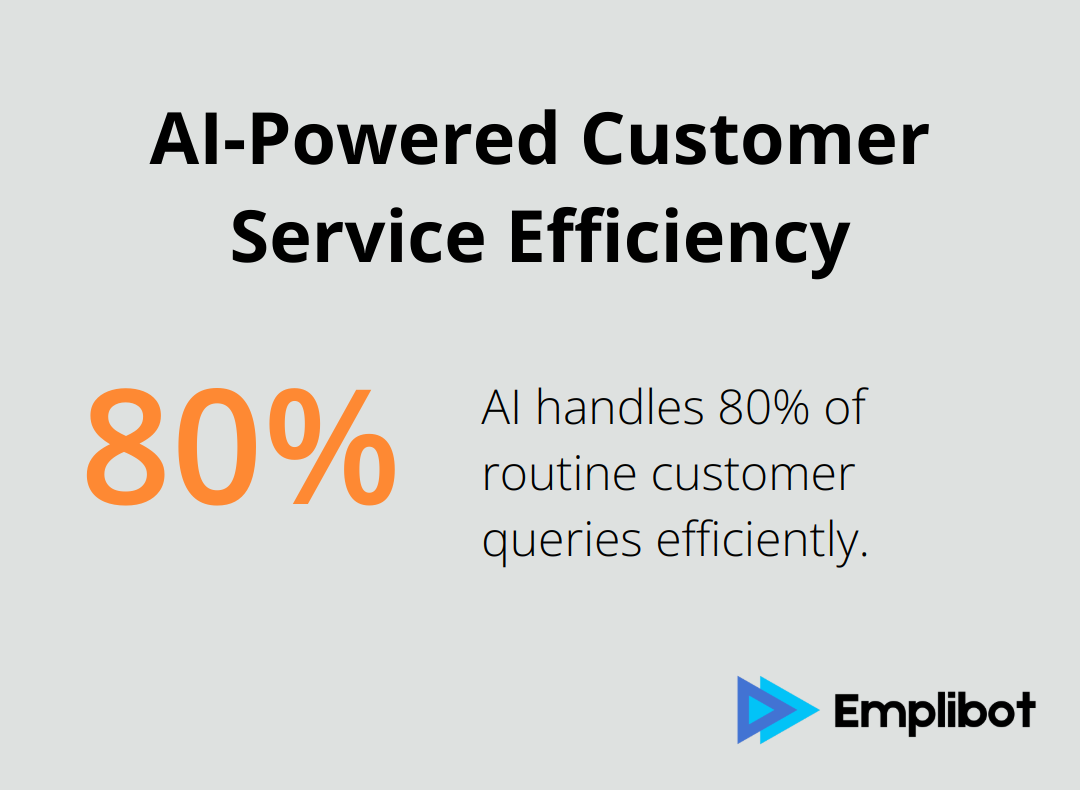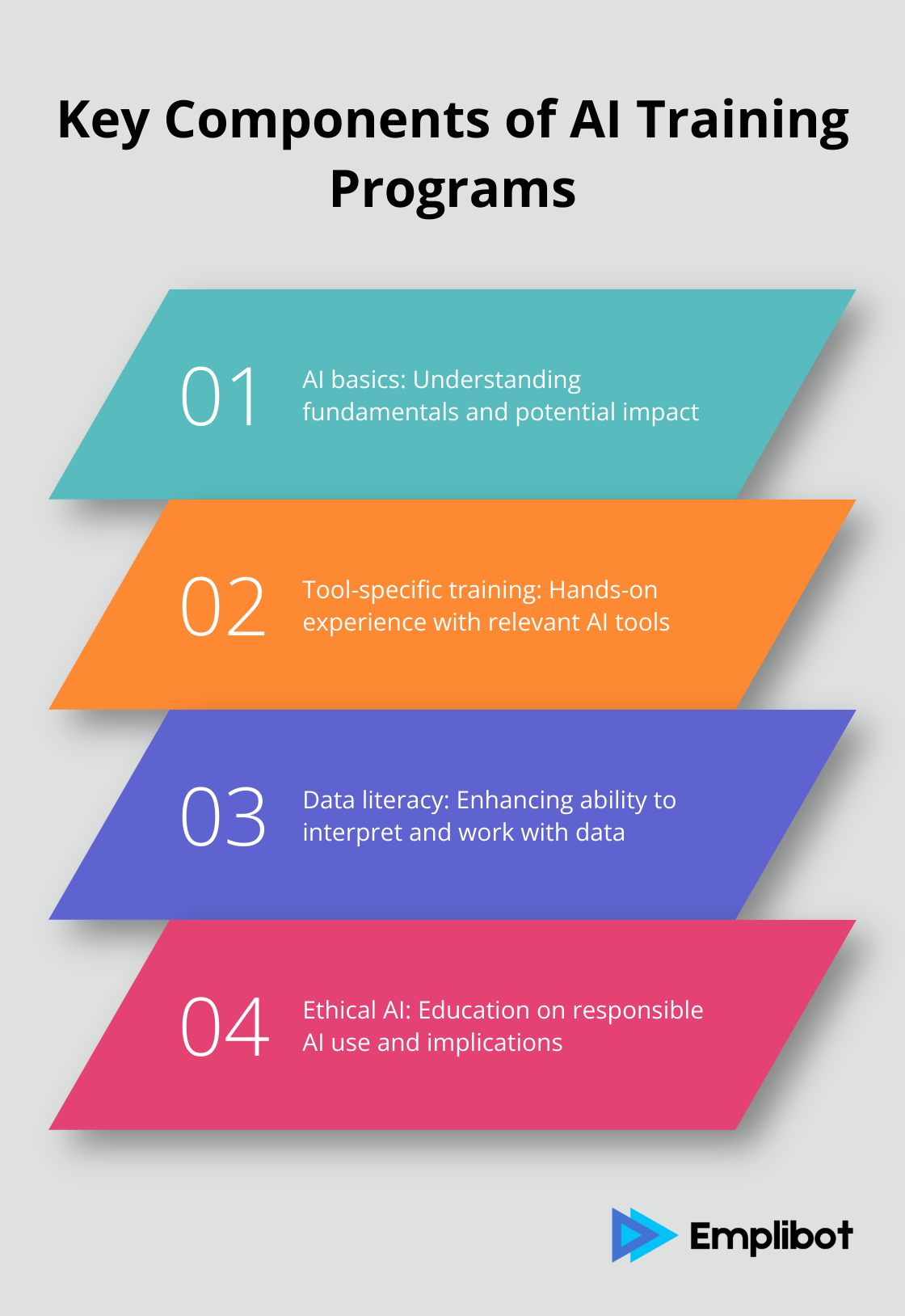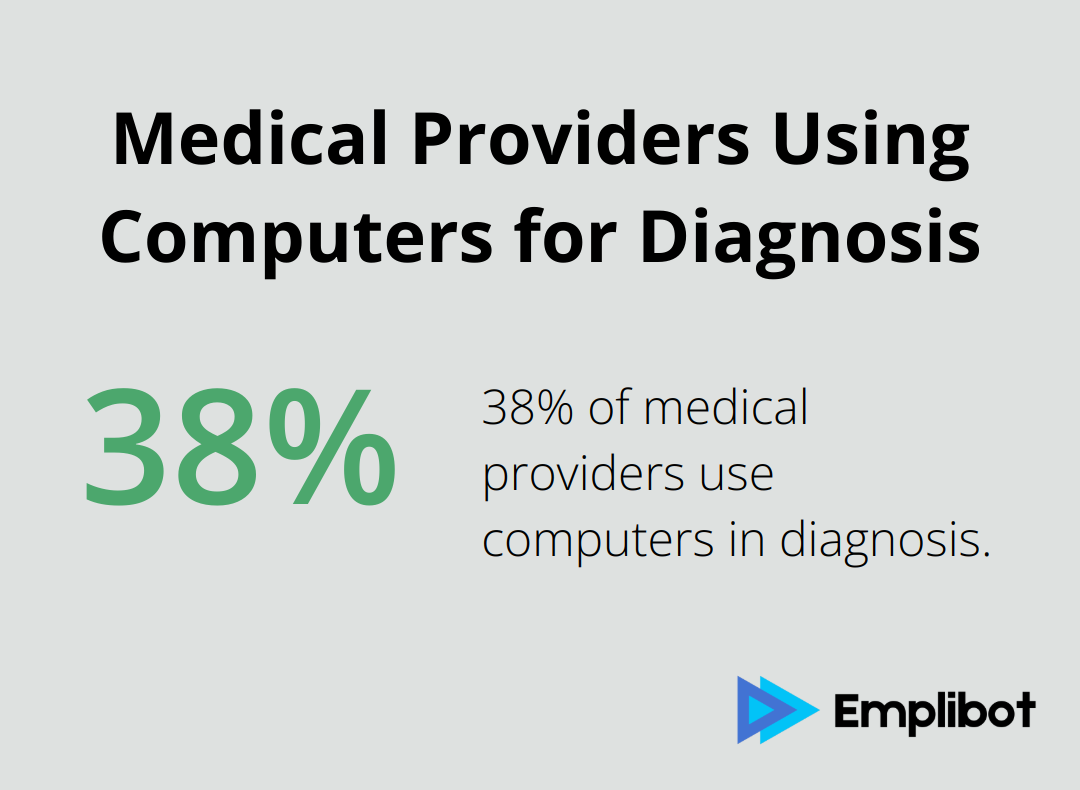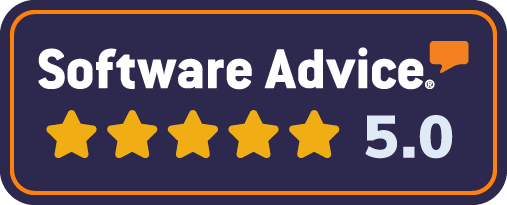At Emplibot, we’ve seen firsthand how AI can transform businesses across industries.
Implementing AI in your business can boost efficiency, drive innovation, and give you a competitive edge.
This guide will walk you through the essential steps on how to implement AI in business successfully, from identifying opportunities to choosing the right solutions.
Contents
ToggleWhere Are Your AI Opportunities?
Map Your Business Processes
The first step to identify AI opportunities in your business involves a thorough mapping of your processes. Document every step in your workflows, from customer acquisition to product delivery. Focus on tasks that are repetitive, time-consuming, or prone to human error. These often present prime candidates for AI automation.
A retail company reduced their inventory management time by implementing an Excel-based system. This freed up staff for more strategic tasks, illustrating the potential of data-driven solutions in streamlining operations.
Pinpoint Pain Points and Inefficiencies
After mapping your processes, identify the pain points and inefficiencies. These could include bottlenecks in production, customer service issues, or data analysis challenges. A study by McKinsey reports that companies addressing specific pain points with AI see a 3-15% increase in profit margins.
One manufacturing company tackled quality control issues with AI-powered visual inspection. This resulted in a 32% reduction in defect rates and a 27% cut in quality control costs, demonstrating AI’s potential to solve concrete business problems.
Explore AI Applications in Your Industry
Research how other companies in your industry use AI. This provides ideas and helps you stay competitive. Industry reports, case studies, and conferences offer valuable insights into AI applications.
In healthcare, for example, AI finds use in drug discovery and personalized treatment plans. Accenture predicts that key clinical health AI applications could potentially create $150 billion in annual savings for the US healthcare economy by 2026.
Align AI Initiatives with Business Goals
Ensure your AI initiatives support your overall business strategy. AI should enhance your key objectives, not distract from them.
If improving customer satisfaction is your goal, consider implementing an AI chatbot. AI-powered customer service can handle up to 80% of routine customer queries, allowing human agents to focus on more complex issues.

Start Small, Think Big
Begin with a pilot project to test AI’s potential in your business. This allows you to learn and adjust before scaling up. Choose a project that aligns with your business goals and has a clear, measurable outcome.
For instance, a small e-commerce business might start by implementing an AI-powered recommendation system on their website. This could lead to increased sales and provide valuable insights for future AI projects.
As you embark on your AI journey, the next step involves preparing your organization for successful implementation. This includes assessing your data readiness and building the right team to drive your AI initiatives forward.
How Can You Prepare Your Organization for AI?
Assess Your Data Landscape
The foundation of any successful AI implementation is high-quality, accessible data. Start with a comprehensive data audit. Catalog all your data sources, assess data quality, and identify gaps or inconsistencies.
To improve your data readiness:
- Centralize your data: Create a unified data repository to break down silos.
- Clean your data: Remove duplicates, correct errors, and standardize formats.
- Implement data governance: Establish clear policies for data collection, storage, and usage.
Build Your AI Dream Team
Successful AI implementation requires a diverse team with a mix of technical and business skills.
Your AI team should include:
- Data Scientists: To develop and implement AI models
- Domain Experts: To provide industry-specific insights
- IT Professionals: To manage infrastructure and integration
- Business Analysts: To translate AI insights into actionable strategies
- Project Managers: To oversee implementation and ensure alignment with business goals
Upskill Your Workforce
As AI becomes more prevalent, it’s essential to prepare your entire workforce for this technological shift.
To address this, invest in comprehensive AI training programs. These should cover:
- AI basics: Help all employees understand AI fundamentals and its potential impact on their roles.
- Tool-specific training: Provide hands-on experience with AI tools relevant to each department.
- Data literacy: Enhance employees’ ability to interpret and work with data.
- Ethical AI: Educate staff on the ethical implications of AI and how to use it responsibly.
Companies like Google and Amazon have invested heavily in AI training programs for their employees (recognizing the importance of a skilled workforce in driving AI adoption).

Foster an AI-Friendly Culture
Creating a culture that embraces AI is vital for successful implementation. This involves:
- Clear communication: Explain the benefits of AI and how it will support, not replace, human workers.
- Encouraging experimentation: Create safe spaces for employees to test and learn from AI tools.
- Celebrating AI wins: Share success stories to build enthusiasm and support for AI initiatives.
The next step in your AI journey involves selecting the right AI solutions and partners to bring your vision to life. This process requires careful consideration of various factors, including your specific business needs and the rapidly evolving AI landscape.
How to Select the Right AI Solutions
Define Your Business Requirements
Start with a clear definition of your business needs. Do you want to automate customer service, optimize supply chain management, or enhance product recommendations? Each use case requires different AI capabilities. For example, natural language processing is essential for chatbots, while computer vision is critical for quality control in manufacturing.
A global retailer improved its inventory management by 30% after implementing an AI solution tailored to their specific supply chain challenges. This example highlights the importance of aligning AI capabilities with your unique business needs.
Compare Off-the-Shelf and Custom Solutions
Decide between pre-built AI solutions and custom-developed ones. Off-the-shelf products offer quick implementation and lower upfront costs but may lack flexibility. Custom solutions provide tailored functionality but require more time and resources to develop.
A mid-sized marketing agency might find that a pre-built AI content generation tool meets 80% of their needs. In contrast, a large pharmaceutical company might require a custom AI solution for drug discovery due to its unique data and regulatory requirements.
Explore Cloud-Based AI Services
Consider cloud-based AI services as they offer scalability, reduced infrastructure costs, and access to cutting-edge AI technologies. Major providers like AWS, Google Cloud, and Microsoft Azure offer a range of AI services that integrate into existing systems.
A recent report explores the five big AI business trends to watch, according to insights from enterprise decision makers, Google search trends, and research. This underscores the growing popularity and effectiveness of cloud-based AI solutions.
Evaluate Potential Vendors
When selecting AI vendors or partners, look beyond just the technology. Evaluate their industry expertise, track record of successful implementations, and ability to provide ongoing support and updates. Request case studies or references from similar businesses in your industry.
Recent statistics show that 38% of medical providers use computers as part of their diagnosis. This highlights the importance of selecting vendors with relevant industry expertise.

Ensure Integration and Scalability
The right AI solution should integrate seamlessly with your existing systems and processes. It should also scale to grow with your business needs. Careful assessment of your requirements and thorough vetting of potential solutions and partners will help you select the right AI tools that drive real business value.
(Note: If you’re considering AI solutions for content creation and social media management, Emplibot offers a comprehensive solution that automates these processes while maintaining high-quality output.)
Final Thoughts
Implementing AI in your business requires careful planning and execution. You must identify AI opportunities, prepare your organization, and select the right solutions to set the stage for transformative success. The key to successful AI implementation lies in aligning technology with your specific goals and challenges.
The AI landscape evolves rapidly, bringing new possibilities and best practices. We encourage you to start with small, manageable projects that address specific pain points in your business. As you gain experience, you can scale your AI initiatives to drive broader organizational change.
For businesses looking to streamline their content marketing efforts, Emplibot offers an AI-powered solution that automates blog and social media management. Our tool can help you save time and resources while boosting your online presence (handling tasks from keyword research to content creation and distribution).


![AI Marketing: Lead Generation [Guide]](https://wp.emplibot.com/wp-content/uploads/emplibot/ai-marketing-lead-generation-1753859292-768x456.jpeg)
![AI Marketing: Predictive Lead Scoring [Guide]](https://wp.emplibot.com/wp-content/uploads/emplibot/predictive-lead-scoring-1753772819-768x456.jpeg)

![Google Autocomplete for Keyword Research [Guide]](https://wp.emplibot.com/wp-content/uploads/emplibot/google-autocomplete-for-keyword-research-1753600089-768x456.jpeg)




